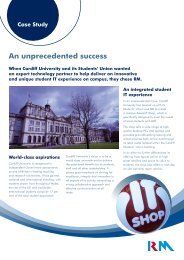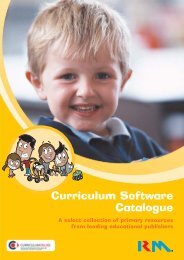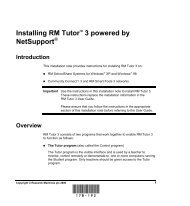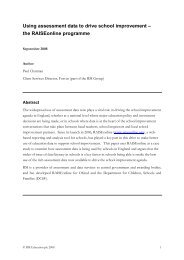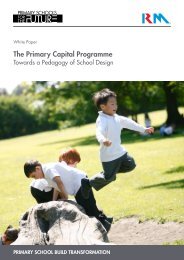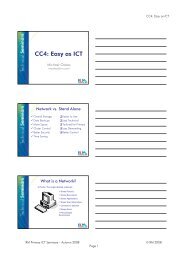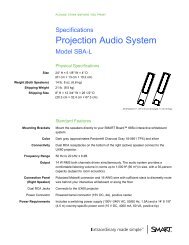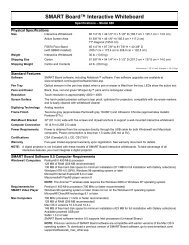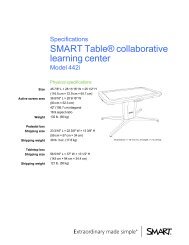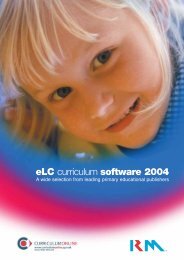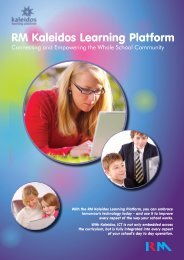Download - RM plc
Download - RM plc
Download - RM plc
Create successful ePaper yourself
Turn your PDF publications into a flip-book with our unique Google optimized e-Paper software.
Getting the most from <strong>RM</strong> Easimaths<br />
The teacher’s role<br />
Use the Teacher dashboard at least once a week to check that the pupils are spending the required<br />
amount of time using <strong>RM</strong> Easimaths, and to see whether they are having any problems. This information<br />
can be used to improve teaching in the classroom. This can take the form of helping individuals or<br />
groups, or teaching the class as a whole. By acting on the information retrieved from the Teacher<br />
dashboard, the effectiveness of <strong>RM</strong> Easimaths is significantly increased.<br />
Ensure that the pupils use <strong>RM</strong> Easimaths regularly – an average of three or four sessions a week<br />
produces the best learning gains, and 15 minutes is the ideal session time – long enough for a pupil to<br />
settle and concentrate on their work, but without exceeding their attention span. The program is<br />
designed to be used by one pupil at a time, rather than in pairs or larger groups.<br />
Different teachers choose to integrate the use of the system into their daily routine in different ways.<br />
However, a common pattern is that it can take up to a month before most teachers and pupils learn to<br />
accept it as part of the classroom routine − so it is worth persevering!<br />
Integrating <strong>RM</strong> Easimaths with other maths teaching<br />
The system works by ensuring that pupils work on several topics in each session. This ensures that a<br />
wide range of topics are practised and fresh in pupils’ minds. This approach is different to that of normal<br />
classroom teaching, where the focus of a maths session would normally be on a specific topic or skill.<br />
Some teachers have initially been concerned that the pupils’ work in <strong>RM</strong> Easimaths is not synchronised<br />
with their class teaching or other maths schemes. However, they have soon realised that <strong>RM</strong> Easimaths<br />
is designed to work independently and, because a range of topics are kept ‘simmering’ in pupils’ minds,<br />
the pupils are, in fact, more likely to understand new material introduced by the teacher. The pupil<br />
profiles produced by <strong>RM</strong> Easimaths can also be extremely useful in helping the teacher split the pupils<br />
into differentiated groups as part of their whole-class teaching strategies.<br />
Teachers can generate reports of their pupils’ progress in terms of the national curriculum. These<br />
reports can be used to inform their teaching strategy and lesson plans, or to support the professional<br />
assessments of their pupils.<br />
Accessing from home<br />
<strong>RM</strong> Easimaths is easy to use, so pupils can work independently at school and at home, learning at their<br />
own pace. Encouraging pupils to access <strong>RM</strong> Easimaths enables parents and carers to get actively<br />
involved in learning at home.<br />
© <strong>RM</strong> Education Plc 2012 Page 19 of 22




